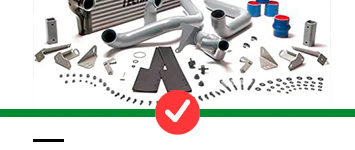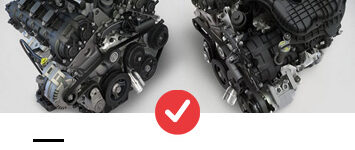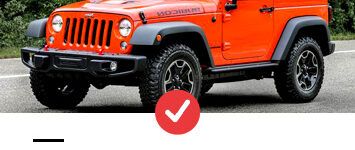Common Jeep JK Problems
Jeep Wranglers are some of the toughest vehicles on the market. They can do anything from a morning commute to weekend adventures with ease. However, these vehicles have their share of issues, just like any other vehicle. We’ve compiled an overview of the most common Jeep Wrangler problems and what you need to know before buying one on your own.
The Jeep Wrangler JKs are well-liked and can be customized easily. Add a few trinkets and you’ll be tearing it up on the trails in no time! 2007 two-door Rubicon is a perfect example of what many new vehicle owners have with 80,000 miles. We were able to tweak some things like coil spacers and other simple items that make the car ride high enough without spending too much money or compromising on safety while making it more than capable of being used as an offroad vehicle. By spending less money on suspension products, we were able to spend more on necessary components such as aftermarket front axle housing, better rocker armor, a good winch and beadlocks. Even though the Jeep suspension is technically well-made, it falls short of perfection.
Increased stress on certain components from big tires and raised suspensions requires diligent maintenance and continuous upgrades to remain a solid performer for the next 80,000 miles. Our JK is used hard, so this isn’t just a theoretical story; we needed fixes to real problems, so we contacted JKS Manufacturing for parts to make our JK an effective vehicle for the next eighty thousand miles.

History of the Jeep Wrangler
The Wrangler has a long and illustrious history as one of America’s favorite off-road capable SUVs, with the first Jeep Wrangler coming out in 1986. The new 2018 model will retain many styling cues from the earlier generation CJ models that progressively became known for their iconic look.
The JK model, which was produced from 2007 to 2018, is most notable for a four-door cab option that first appeared in the third generation. The 3rd-generation option offered traction and stability control in an effort to increase safety, but still included removable doors, soft tops, or a fold-down windshield.
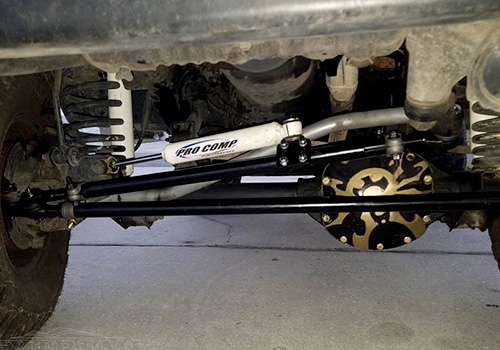
Common Issues With Jeep JK Wranglers
Jeep Wrangler owners should be aware that this third generation vehicle is less dependable, with less than 1% of breakdowns for engine or transmission problems. The 6.0 powerstroke turbocharger has the most complaints and poorest reliability, many of which pertain to different components in this vehicle. Let’s take a look at some of the most common problems they had with these Jeeps.
TIPM Failure
It’s important for your vehicle’s electrical system to stay in top working order. Without a functional, totally integrated power module (TIPM) the fuel pump won’t move the gasoline and you may not be able to use your headlights or have throttle control. The TIPM is important in assisting everything from simple things like radio functionality all the way up to more complicated tasks such as gas, steering, and brake performance.
Some Fiat-Chrysler models from 2007 to 2015 have a tendency to suffer early TIPM failure. The Liberty, Grand Cherokee and Wrangler are three vehicles in the model years susceptible to this issue. Symptoms of TIPM failure include:
- Fuel pump staying on for an abnormally long time – causing it to burn out.
- The airbags in a Jeep won’t work when they’re engaged too often or deployed early.
- The engine will stall while the vehicle is in motion.
- The JK can sometimes give warning signs that it’s going to start having problems.
- The horn honks at the push of a button.
- The power windows get stuck and need to be released by rolling down all of the windows.
- Doors sometimes lock or unlock without me inputting the code.
Many owners discussed the feeling of a faulty or failed TIPM as being like «traveling with children who are difficult and demanding». Chrysler responded to this problem by issuing a recall for the 2007 Jeep Wrangler. The company blamed the dangerous stalling on a TIPM timing error. Even though several other year models experienced the same problem, none of them received a recall – it was not considered an urgent safety hazard. Owners had to pay for repairs or replacements out of pocket.
A TTPM failure can be expensive, as the average repair costs $1200. Reports illustrate that this problem typically occurs before a vehicle reaches 40,000 miles.
Ignition Switch
Besides the death wobble, our beloved Jeep Wranglers had a significant issue with the ignition switch. This problem made starting the vehicle either very difficult or impossible as turning the key to fully start it will lock in position and not complete turn over. In some cases when driving, this short circuit resulted in the engine shutting off while the vehicle is still running. These engine issues date back to 1997-2014, as this was a common issue for all many Jeep Wrangler models. Attempting to start the car would result in a «click» from the engine without actually turning on. Correcting these faulty ignition switches is easy enough with a recall issued by Jeep and new owners are likely already updated to avoid any trouble while starting up their Jeeps.
Cylinder Head Issues
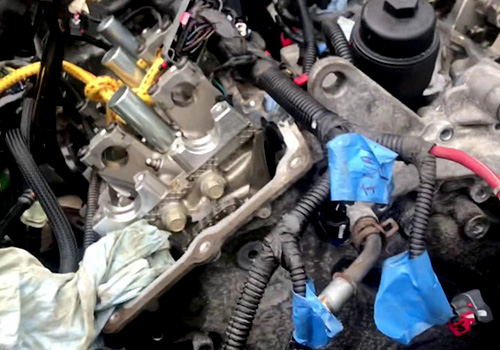
One persistent 2012 Jeep Wrangler problem is the need for cylinder head replacement. Many owners have reported a sudden lack of power, coupled with some instances of repeated misfiring on cylinders. While this seems to be an expensive repair, the cost can vary from $200 to over $600 depending on which part needs to be replaced. This issue mostly presents as a result of compression leaks originating from defective cylinder heads that are aftermarket replacements themselves. The Powerstroke turbocharger can sometimes suffer from a flawed design that causes long-term engine breakdowns. Fortunately, according to an FCA TSB (09-002-14 REV. B) published in December of 2014, owners may be eligible for reimbursement if they make the necessary repairs under warranty within their coverage period.
Blown Engine
This finding is another issue that affects the 2011 Jeep Wrangler, in particular for owners who did not see a red check engine light illuminate. For those who encountered this lack of oil level warning, they experienced their vehicle shifting from normal to noise and vibrations before noticing the low levels of oil. Luckily many owners report checking their levels before extensive damage occurred and some have had to replace engines due to significant issues like decreased compression as well as seized crankshafts. FCA issued a TSB on February 6, 2013 which directed technicians on what to do in case of engine noise and unusual oil consumption. This included the 2011 Jeep Wrangler as well as other models such as 2012 and 2013 model years under the FCA brand – among others.
Leaking Door Seals
A door sealing issue is worrisome for any vehicle, but Wranglers are particularly well-known for their door seal troubles. This problem area spans generations of Jeep Wranglers with A-pillar leaks being a worry to 1987 models and 2002 models in particular.
Jeep JK doors need to be sealed shut to prevent moisture from accumulating. This can cause damp environments that emit unpleasant odors or even damage electrical systems. Fortunately, seal kits are easy to find and install, costing an average of $50 per door.
The “Death Wobble”
Death wobbles can occur for a number of reasons, but the common consensus is that it usually lands on three possible culprits: potholes, pressing hard while braking or turning and not being used to driving in terms of changes in road conditions.
It may feel like your vehicle’s axle or wheels will fly off, but no one has ever died as a result of a death wobble. If it happens to you, try letting go and staying calm so that you can get the vehicle back under control and ensure that you make it safely to a mechanic’s garage.
The death wobble is a symptom of premature steering or suspension failures. The first step to diagnosis includes checking for any parts that have been bent or broken in the front end if you’re experiencing the symptoms. Common causes are:
- The worn out or snapped ball joint.
- The steering system are drag links and tie rod ends.
- The front track bar are from a broken bolt and being out of alignment.
- The problems with the lower control arms can include corroded and/or rusted ball joints.
- The poblems with the upper control arms.
- The steering knuckles lock when the vehicle is turned and can get stuck.
- The steering stabilizer is most likely at fault when it comes to jerky or «crazy» steering.
- The poblems the suspension bushings wear out.
Troubleshooting the death wobble includes detecting wear and damage on the various parts of your rig. In some cases, tightening all hardware to manufacturer-specified torque can help identify the issue. Wheel alignment problems may not be responsible for this problem, but it is necessary to know when these adjustments affect sagging or bouncing in other areas. Troubleshooting impact related issues also requires checking tire balance and inflation levels.
Many Jeep Wranglers have been subjected to the death wobble, which is not an isolated incident as a formal study conducted by Chrysler reports. The 2007 Jeep Wrangler runs up on incidents of $895 with attempted repairs and most seldomly permanent fixes for this recurring issue.
Rear brake rotors from other vehicles may be used in place of those found in Jeeps.
The pros and cons of entering off-road races are carefully discussed on various forums. While some owners turn to expert advice, others post videos of their excursions to find solutions. There’s plenty of help for Jeep owners online, although it doesn’t come cheap.
Weak Arms Problem
When the rear axle is lifted, especially on two-door models with an aftermarket driveshaft in place, you’ll need to adjust the pinion angle. The same applies for four-door models, but not as severely: a one inch lift will typically be safe. It isn’t possible to install eccentric bolts with the mounting holes for them, as they can wedge and wear down due to off-road use. And many aftermarket adjustable control arms employ polyurethane, spherical bushings or cheap quality rubber bushings that normally don’t hold up. Once these go, you will often experience lots of clunking, wandering or plain old wonky handling.
Solution: Ideally, the best suspension setup would use factory upper and lower control arms. They don’t offer any adjustability and can also limit flex to an extent– unless you get JKS adjustable short-arm control arms from with OE-grade rubber bushings. The arm uses greaseable brass bushing in threaded bodies to allow full articulation without restriction of length adjustment capability (available up 3″). A powder coat finish on these parts ensure longevity when used outdoors or in harsh conditions.
Track Crack Problem
The raised chassis will make the suspension and track bar angles more severe. Some suspensions are designed to drop the rear of the vehicle’s frame, but these brackets also often bend and can damage other important pieces. The rear track bar bracket was torn away from the axle with only a moderate 13⁄8-inch lift out back. The turbocharger keeps popping off the vehicle, so I had to pound it back in place and reweld it.
Solution: If you need to replace the OEM bracket, JKS offers a weld-on rear track bar reinforcement bracket built from stout 7-gauge (0.1875 inch) steel that wraps the bottom of the axle tube and sandwiches perfect with factory mount location for additional areas of triangulation.
Sloppy Steering Problem
Considering the issues with increased risk of death wobble and sloppy handling that can be experienced by lifted JKs, this solution should be investigated. Along with prematurely worn ball joints, incorrect toe settings, or wasted tie-rod ends, a contributing factor to poor steering performance is often an increase in wear on the JK’s sector shaft bearing. The long sector shaft within the box creates more leverage on bearings as they operate from the change in angle of being mounted to a dropped pitman arm or larger tires. For the frame rail, which is located under your steering box at the front of your truck, heavy use can cause it to flex and eventually crack.
Solution: Chrysler has a few unique reinforcement kits for the track-bar and steering box mounts as well as adding double-sheer pillow block bearings to the bottom of the input shaft. This prevents any play inside the steering box under heavy use with welding on a brace support strut featuring rod ends on both sides to tension these brackets and equally distribute steering and track bar loads to both framrall bars. The system is composed of the Front Track Bar Chassis Brace, Sector Shaft Brace, and front chassis brace connector.
Transmission Recalls
Starting in 2005, Jeep Wrangler models were subject to a series of recalls related to the automatic transmission and powertrain. If your vehicle gets locked into one gear while you’re driving on the freeway and it’s not capable of being manually shifted, this could lead to potential deadly consequences in certain situations.
TPS Failure
The throttle position sensor (TPS) supplies information to the engine control module about how open the throttle is at any point in time. The 6.0 powerstroke turbocharger can modify emissions, ignition timing, and fuel injection by syncing with the TPS (throttle position sensor). When out of whack or when not working properly it sends erroneous information to your car’s ECM.(The throttle position sensor monitors how far your fingers are pressing open on the gas pedal.) Symptoms might include a check engine light and transmission-related shifts that result in jerky or nonexistent shifting, which can be dangerous while driving.
Signs of TPS failure to look for include:
- Under moderate stress, your Jeep JK bounces or shakes.
- The Jeep JK has developed some strange surges in speed lately.
- Jeeps engines sometimes stall for no apparent reason.
- On a Jeep JK reduced power and fuel economy are common problems.
- The engine hesitates under acceleration.
- Delayed shifts in the transmission.
TPS replacements typically cost $100-$160, depending on the Jeep Wrangler model. Parts for TPS replacement are around $130, while labor is assessed at a higher rate.
Engine Popping
Problems with the engine can come as a shock, especially if it has never happened before. Common problems such as backfiring or popping sounds could cause you to jerk the car while driving. When the engine backfires in a Wrangler, it could be due to:
- Incorrect timing.
- Failed spark plugs.
- Running rich with too much fuel and insufficient air intake.
- Plug wires (when equipped).
Backfiring can happen for a variety of reasons, and the mechanics will need to figure out which specific part needs replacement.
There’s no denying the rugged appeal of the Jeep Wrangler. If you’re buying one for a teen, prepare to spend some money on vehicle upgrades like big tires and suspension mods. The truck is powerful enough for a morning commute, but rugged enough to handle an afternoon hike. Jeep Wranglers are vehicles with many maintenance and repair issues and can prove to be very expensive. A number of common problems plague every generation, but newer models can be especially problematic for the first-time Jeep owner.

